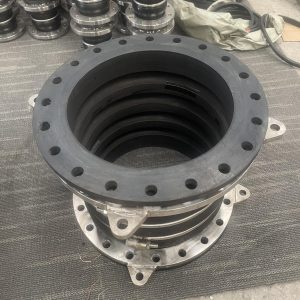Phone: (+86)13526688380
WhatsApp/WeChat: (+86)13526688380
Need help or have a question?
Contact us at: info@jpsgy.com
Xicun Village, Xicun Town, Gongyi, Henan, China (Mainland)
Phone: (+86)13526688380
WhatsApp/WeChat: (+86)13526688380
Need help or have a question?
Contact us at: info@jpsgy.com
Xicun Village, Xicun Town, Gongyi, Henan, China (Mainland)

The flanged rubber joint is a flexible connector in the pipeline system. It compensates for the displacement caused by temperature changes, vibration or foundation settlement through rubber elastic deformation, achieving shock absorption, noise reduction and pipeline protection.
Its flanges at both ends adopt a special flange design, and the rubber flanges are tightly combined with the flanges, greatly improving the bonding strength and sealing. The multi-layer structure gives it stronger pressure bearing and tensile resistance. The flange connection design makes installation and disassembly more convenient.


It can efficiently absorb vibration noise, compensate for axial, lateral and angular displacement of the pipeline, and avoid stress concentration. The flange structure has excellent sealing performance, and is matched with customized rubber materials such as acid and alkali resistance to cope with corrosive media.
Widely used in water supply and drainage, HVAC, chemical industry, electricity, construction and other fields. For example: water pump inlet and outlet shock absorption, air conditioning water system thermal expansion and contraction compensation, high-rise building foundation settlement buffer.
Compared with ordinary rubber joints, its flange design has better sealing, stronger pressure resistance and better pull-off resistance. However, attention should be paid to media compatibility, working pressure, temperature range and standardized installation to ensure flange alignment and even tightening of bolts.